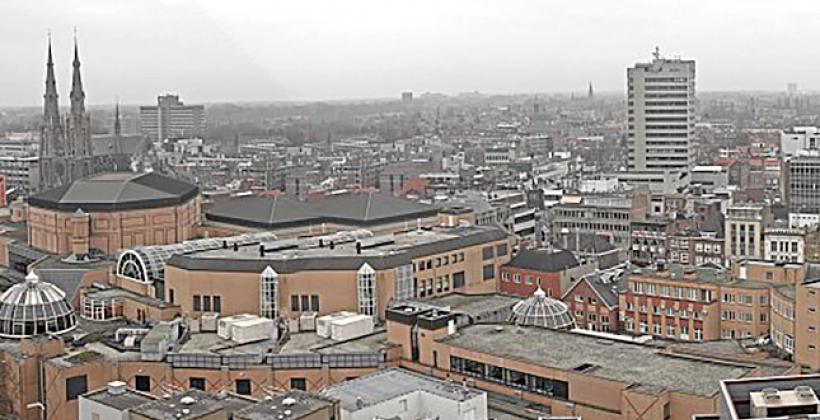
Location
Description
Eindhoven is the centre of the Brainport Region, one of today’s three top economic engines of the Netherlands, delivering about 14 % of the national gross domestic product (GDP). Two districts - Strijp-S and Eckhart Vaartbroek - will be transformed into sustainable living environments as part of TRIANGULUM.
The former Philips industrial complex in the Strijp-S neighbourhood will become a creative smart district. An innovative concept to clean up contaminated land will double as a means of producing energy. It is also planned to optimise the heat provision powered by renewable energies of the existing buildings. A district-wide ICT solution will allow residents to access different kinds of infrastructure, such as booking electric vehicles from a district car-sharing scheme or using smart parking concepts. In this way, the IT-based tool will help residents to develop sustainable patterns of energy and mobility behaviour. In addition, electric buses will make city traffic more eco-friendly.
A different set of challenges is posed by the Eckart Vaartbroek district, where energy-efficiency renovations will be carried out on the social housing stock that predominates in this area. In order to precisely calculate energy savings, the project will use an IT-based instrument capable of modelling costs and providing a 3D visualisation of the district.
Demo Site Expected Impact
* Detailed information regarding the technical and financial performance will be available at a later stage.
The key impacts of TRIANGULUM’s demonstration measures are:
- a significant increase in joint ownership of Smart City Eindhoven among users. Citizens and other relevant actors will be engaged in the process of investing into Eindhoven as a smart city;
- a new, smarter way of working for the city administration that allows true integration of smart city aims and objectives within and outside the municipal organisation;
- the implementation of innovative energysaving technologies that will reduce energy bills and limit CO2 emissions by 67 %;
- data infrastructure and sensor networks get a boost when the open data platform further facilitates smart city developments;
- people know they’ve been consulted and projects are being implemented in cocreation;
- there’s been a sustainable transformation of public space and housing is still affordable;
- there’s an uptake of smart solutions and a redefining of quality of life.
Technologies
Buildings and energy
* Detailed information regarding the technical and financial performance will be available at a later stage.
The interventions in Eindhoven include:
Energy efficiency in buildings
- Building envelope retrofitting
- Renovation/refurbishment of dwellings: co-creation process with the tenants; use of energy saving visualisation platform (WoonConnect)
- Building integrated renewable energy sources
- Replacing heat provision utility (gas) with one powered by renewable energy (biomass)
- Building services (HVAC & Lighting)
- Smart energy-saving offices innovative concept (through the installation of sensors) for reducing an estimated 20% of energy
Energy systems integration
- Photovoltaics
- Wind turbines
- Smart street lighting
Mobility & Transport
- Clean fuels and fuelling infrastructure
- Smart charging of electric vehicles by optimising the use of charging station
ICT
- Traffic control system
- Improved parking management
- Detailed assessment for parking spaces (real time parking guide system)
- Urban data platform
- Smart city ICT open data platform
- Transparency
- Stimulate co-creation between government and partners in the city
- ICT as planning support
- Innovative ICT application (WoonConnect)
- Interactive design and process for dwelling improvement (WoonConnect)
- Stimulate investment in dwelling refurbishment
- Strategic urban planning
- Sensor network in the public space (fibre-optic data infrastructure)
- Open WiFi
- Sound, video and air quality sensors.
Building aspects
- Building Energy Services
- heating and DHW
- Building Energy Services
- lighting and appliances
- Installed Renewable Energy Sources
- photovoltaic - building integrated
- Technology used to supply the buildings
- boiler
- Technology used to supply the buildings
- electrical equipment
Energy Carriers
- Biowaste
- Domestic gas - grid-bound
- Electricity
- Geothermal heat
Energy Systems Types
- Sustainable Generation
- Boiler
Mobility Type of Intervention
- Infrastructure
- Vehicles
Thematic Field
- Energy System(s) Integration
- Information and Communication Technologies
- Mobility and Transport
- Refurbished Building(s)
